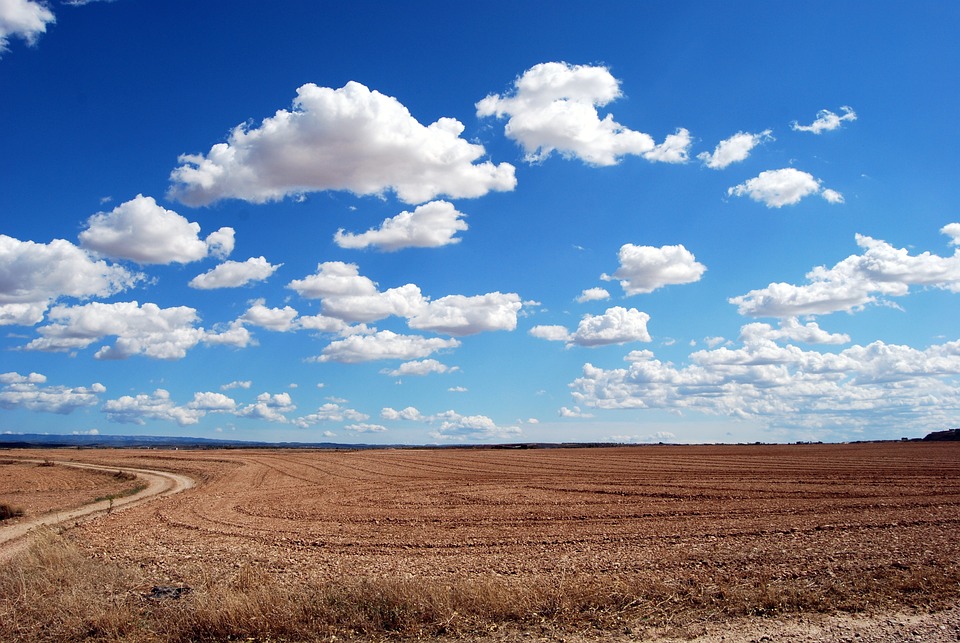The world is facing a pressing challenge – how to ensure food security for a growing population while also addressing the environmental concerns associated with traditional agricultural practices. As we look to the future, it is clear that sustainable solutions are crucial to meeting these challenges head-on. In this article, we will explore the innovative approaches being taken in the field of agriculture to create a more sustainable and secure food system.
Table of Contents
| Section | Link |
|---|---|
| The Importance of Sustainable Agriculture | Go to Section |
| Advances in Farming Techniques | Go to Section |
| Technology and Agriculture | Go to Section |
| Urban Agriculture: Growing Food in Cities | Go to Section |
| Climate Change and Agriculture | Go to Section |
| Regenerative Agriculture: Restoring the Land | Go to Section |
| Vertical Farming: Growing Upwards | Go to Section |
| AI and Automation in Agriculture | Go to Section |
| Biotechnology and Crop Improvement | Go to Section |
| The Role of Policy and Investment | Go to Section |
| Farming for the Future: Sustainable Practices | Go to Section |
| Improving Access to Food and Nutrition | Go to Section |
| Challenges and Opportunities | Go to Section |
| FAQs | Go to Section |
| Conclusion | Go to Section |
The Importance of Sustainable Agriculture
In our increasingly interconnected world, the importance of sustainable agriculture cannot be overstated. With global population projected to reach 9.7 billion by 2050, it is imperative that agricultural practices are able to meet the growing demand for food without compromising the natural resources on which they depend.
By implementing sustainable practices such as crop rotation, organic farming, and precision agriculture, farmers can minimize the use of chemical inputs, reduce soil erosion, and promote biodiversity. These practices not only ensure the long-term viability of agriculture but also contribute to a healthier and more resilient ecosystem.
Advances in Farming Techniques
Agricultural technology is rapidly advancing, offering new opportunities for sustainable farming. From precision farming technologies that enable farmers to optimize the use of water and fertilizers to vertical farming systems that allow food to be grown in urban areas with limited space, these innovations are transforming the way we produce food.
Additionally, advancements in genetic engineering have led to the development of crops that are more resistant to pests and diseases, reducing the need for chemical pesticides. These technological advancements not only increase the efficiency and productivity of agriculture but also minimize its impact on the environment.
Technology and Agriculture
The integration of technology into agriculture, often referred to as Agriculture 4.0, holds great promise for improving the sustainability and efficiency of the global food system. From drones and sensors that monitor soil conditions and plant health to data analytics and machine learning algorithms that optimize farm management, technology is revolutionizing agriculture.
By harnessing the power of big data and analytics, farmers can make more informed decisions about when to plant, irrigate, and harvest, reducing waste and increasing yields. Furthermore, the use of autonomous vehicles and robots in farming operations can minimize labor requirements and enhance precision farming practices.
Urban Agriculture: Growing Food in Cities
The rapid urbanization of our world presents both challenges and opportunities for food production. Urban agriculture, the practice of growing food in cities, offers a solution to the growing need for fresh, locally sourced produce.
From rooftop gardens and vertical farms to hydroponic and aquaponic systems, urban agriculture takes advantage of unused spaces and leverages technology to maximize food production in urban areas. By reducing the distance between farms and consumers, urban agriculture can significantly reduce the carbon footprint associated with food transportation.
Climate Change and Agriculture
Climate change poses a significant threat to global food security. Rising temperatures, changing rainfall patterns, and extreme weather events can disrupt agricultural production and exacerbate food shortages.
Adapting to the changing climate requires resilient agricultural practices that can withstand these challenges. This includes the use of drought-tolerant crop varieties, efficient water management systems, and climate-smart farming techniques.
Regenerative Agriculture: Restoring the Land
Regenerative agriculture goes beyond sustainability by aiming to restore ecosystems and improve soil health. By adopting practices such as cover cropping, rotational grazing, and agroforestry, farmers can regenerate soil fertility, sequester carbon, and enhance biodiversity.
These practices not only have the potential to mitigate climate change but also increase the resilience of agricultural systems to withstand extreme weather events and pest infestations.
Vertical Farming: Growing Upwards
Vertical farming is a revolutionary approach to agriculture that involves growing crops in vertically stacked layers, often in urban environments. By utilizing hydroponic or aeroponic systems, vertical farms can optimize resource use, minimize water consumption, and maximize crop yield.
Vertical farming has the potential to transform urban landscapes, reducing the need for land-intensive traditional farming practices and enabling food production in areas with limited access to arable land. It also minimizes the environmental impact associated with conventional farming, such as pesticide use, soil erosion, and water pollution.
AI and Automation in Agriculture
The integration of artificial intelligence (AI) and automation in agriculture has the potential to revolutionize the way we produce food. From autonomous tractors and robots that perform tasks such as planting and harvesting to AI-powered algorithms that optimize crop management, these technologies streamline farming operations and increase efficiency.
By analyzing vast amounts of data, AI systems can provide valuable insights and predictions, enabling farmers to make data-driven decisions and optimize resource allocation. Automation also reduces the labor-intensive nature of farming, making it more attractive and accessible to a new generation of farmers.
Biotechnology and Crop Improvement
Biotechnology plays a critical role in crop improvement, enabling the development of traits that enhance crop productivity, nutrition, and resilience. Genetically modified organisms (GMOs) have been engineered to withstand pests, diseases, and environmental stressors, reducing the need for pesticides and irrigation.
Furthermore, biotechnology can be used to improve nutritional content, such as increasing the vitamin and mineral content of crops. These advancements in crop improvement have the potential to address nutrient deficiencies and improve the nutritional quality of food.
The Role of Policy and Investment
Creating a sustainable and secure food system requires the collaboration of governments, policymakers, and investors. Implementing policies that support sustainable agricultural practices, such as providing incentives for farmers to adopt regenerative farming techniques or promoting the use of renewable energy in farming operations, is crucial.
Investing in research and development of sustainable agriculture technologies and infrastructure is also essential to drive innovation and accelerate the adoption of sustainable practices.
Farming for the Future: Sustainable Practices
Farmers around the world are embracing sustainable practices to ensure the long-term viability of agriculture. These practices include organic farming, agroecology, permaculture, and integrated pest management.
By prioritizing soil health, biodiversity, and resource conservation, farmers can mitigate the negative impacts of agriculture on the environment while maintaining or increasing crop yields.
Improving Access to Food and Nutrition
Ensuring access to nutritious and affordable food for all is a critical element of global food security. Sustainable agriculture can contribute to improving food access and nutrition by promoting local food systems, reducing food waste, and increasing the availability of diverse and nutritious crops.
Furthermore, empowering smallholder farmers, particularly women, through access to resources and markets can enhance food security and economic development in rural communities.
Challenges and Opportunities
While sustainable agriculture offers immense potential, it also faces various challenges. These include the scale-up of sustainable practices, access to financing and technology, and addressing social and cultural barriers to change.
However, these challenges also present opportunities for collaboration and innovation. By fostering partnerships between governments, businesses, farmers, and consumers, we can collectively work towards a more sustainable and secure food future.
Frequently Asked Questions
What is sustainable agriculture?
Sustainable agriculture is an approach to food and fiber production that promotes environmental stewardship, economic viability, and social equity.
How can vertical farming contribute to sustainable agriculture?
Vertical farming maximizes crop yield and minimizes resource use, making it a sustainable solution for food production in urban areas.
What role does technology play in agriculture?
Technology enables precision farming, optimization of resource use, and data-driven decision-making, enhancing the sustainability and efficiency of agriculture.
Why is regenerative agriculture important?
Regenerative agriculture improves soil health, sequesters carbon, and enhances biodiversity, making it critical for mitigating climate change and ensuring long-term food security.
How can policy and investment drive sustainable agriculture?
Policies that support sustainable farming practices and investments in research and development are essential for driving the adoption of sustainable agriculture.
Conclusion
The future of agriculture lies in sustainable solutions that balance food production with environmental stewardship. By embracing advances in farming techniques, harnessing the power of technology, promoting urban agriculture, and implementing regenerative practices, we can create a more secure and resilient global food system.























